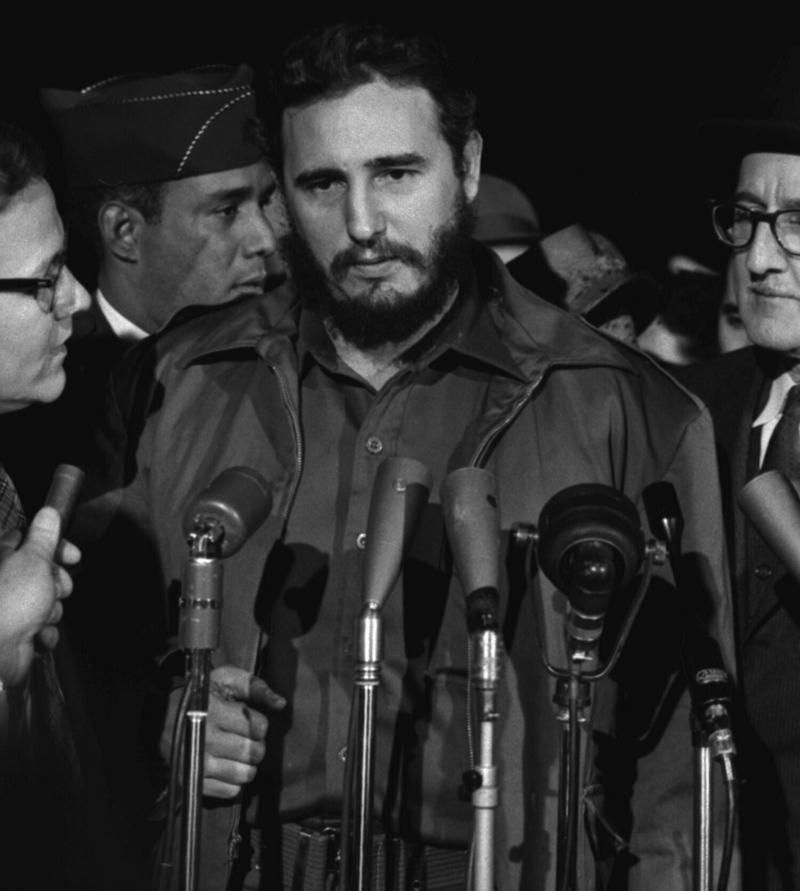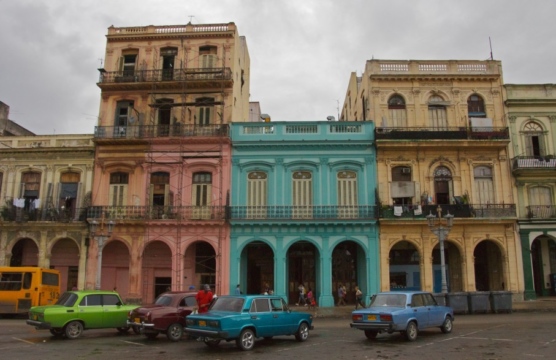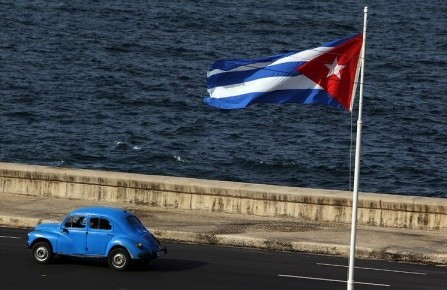Fidel Castro visited Chile in November 1971, some seven months after the inauguration of Salvador Allende, Latin America’s first democratically elected socialist president. Greeted by hundreds of thousands of cheering Chileans, Castro had come to celebrate with his only ally in Latin America. His trip was scheduled for 10 days, but he stayed 24 days, leaving long after the enthusiasm had faded.
Chile had grown weary of Castro.
Castro, who led Cuba for nearly 50 years, died Friday. In 2006, he had transferred the presidency to his younger brother, Raul Castro, after a debilitating intestinal ailment. Fidel Castro’s vision and iron rule shaped every aspect of life in Cuba and its relations worldwide. Many, perhaps most, Cubans would say he held power too tightly and too long. He was Latin America’s most prominent 20th century leader, but his legacy remains to be defined.
How will Castro, who had been out of power and absent from the international stage for years, be judged? Will he be remembered most for ending U.S. hegemony over Cuba and building a more egalitarian society where Cubans had access to the best education and health services in Latin America – or for keeping the island isolated, repressed and underdeveloped and for turning it into a country that most young people want to leave?
In Latin America, will he be remembered for bringing a progressive social agenda to the world’s most unequal region, or for polarizing Latin American politics, and contributing to its many conflicts?
Although not the first successful revolution in Latin America, Castro’s triumphant march into Havana in 1959 energized leftist movements throughout the region and sparked armed insurgencies in some nations. The Cubans had demonstrated that a small guerrilla uprising could grow, mobilize popular support, defeat a professional army, and take over the government. Nonetheless, only one other guerrilla group, the Sandinistas of Nicaragua, managed to replicate Castro’s success by overthrowing a government and assuming power — while other insurgencies left only havoc and bloodshed in their wake.
The Cuban revolution and the island’s alliance with the Soviet Union sharply escalated Cold War security concerns in Washington and several Latin American capitals. In many places, the armed forces cracked down on left-wing movements, mostly ignoring human rights and the rule of law. The militaries of Brazil, Chile, Argentina, and Uruguay, with varying degrees of U.S. support, ousted democratically elected governments, established brutal, dictatorial regimes, and held power for many years. For the United States, security and anti-communism came to trump all other objectives in Latin America. “No new Cubas” was a guiding principle of American policy.
With the end of the Cold War and the breakup of the Soviet Union, Castro and Cuba assumed much lower profiles in Inter-American affairs. By then, military rule had nearly disappeared in Latin America. Civilian, elected leaders were in charge. Aside from the United States, the nations of the hemisphere all restored normal relations with Cuba. No longer viewed either as a threat or a model, Cuba became less and less relevant in regional affairs. Although late, even the United States finally came around to the view that its long-standing policy of isolation of Cuba no longer made sense. In 2014, President Barack Obama announced plans to end a half-century of hostility and fully engage the island. His visit to Cuba in March and the re-establishment of full diplomatic relations underscored the profound, and probably irreversible change in policy. And last month, at the UN General Assembly, in an especially powerful symbolic act, the United States refused to endorse its own economic embargo against Cuba.
Fidel Castro was the idol and the inspiration for Venezuela’s Hugo Chavez, who in 1999, became the first socialist in Latin America since Allende to win a presidential election. He was soon joined by a string of other elected socialist presidents. Some were driven by ideological fervor, intent on installing socialist economies, and fiercely anti-American. Others, however, like Brazil’s Luiz Inacio Lula da Silva, were more moderate and pragmatic, retaining cordial relations with Washington and sticking with market economies, while giving new priority to meeting the needs of their countries’ poorest citizens. Virtually all of the new leftist leaders in the Americas saw Castro and the Cuban revolution as a central influence in shaping their political views and ambitions. Cuba was widely courted as an ally and a friend.
It is uncertain, however, whether one-party Cuban socialism can survive much beyond Castro’s death. Today, most ordinary Cubans are enthusiastic about renewed relations with the United States — amply illustrated by their animated welcome of Obama earlier this year. Although not ready to endorse U.S. policies or wholly adopt American values, Cubans see reconciliation as the gateway to the modern world, to technology and information, to new opportunities, and to a better life. They have lost interest in stale ideas about how the world should work. Instead, they want to participate in the world.






















